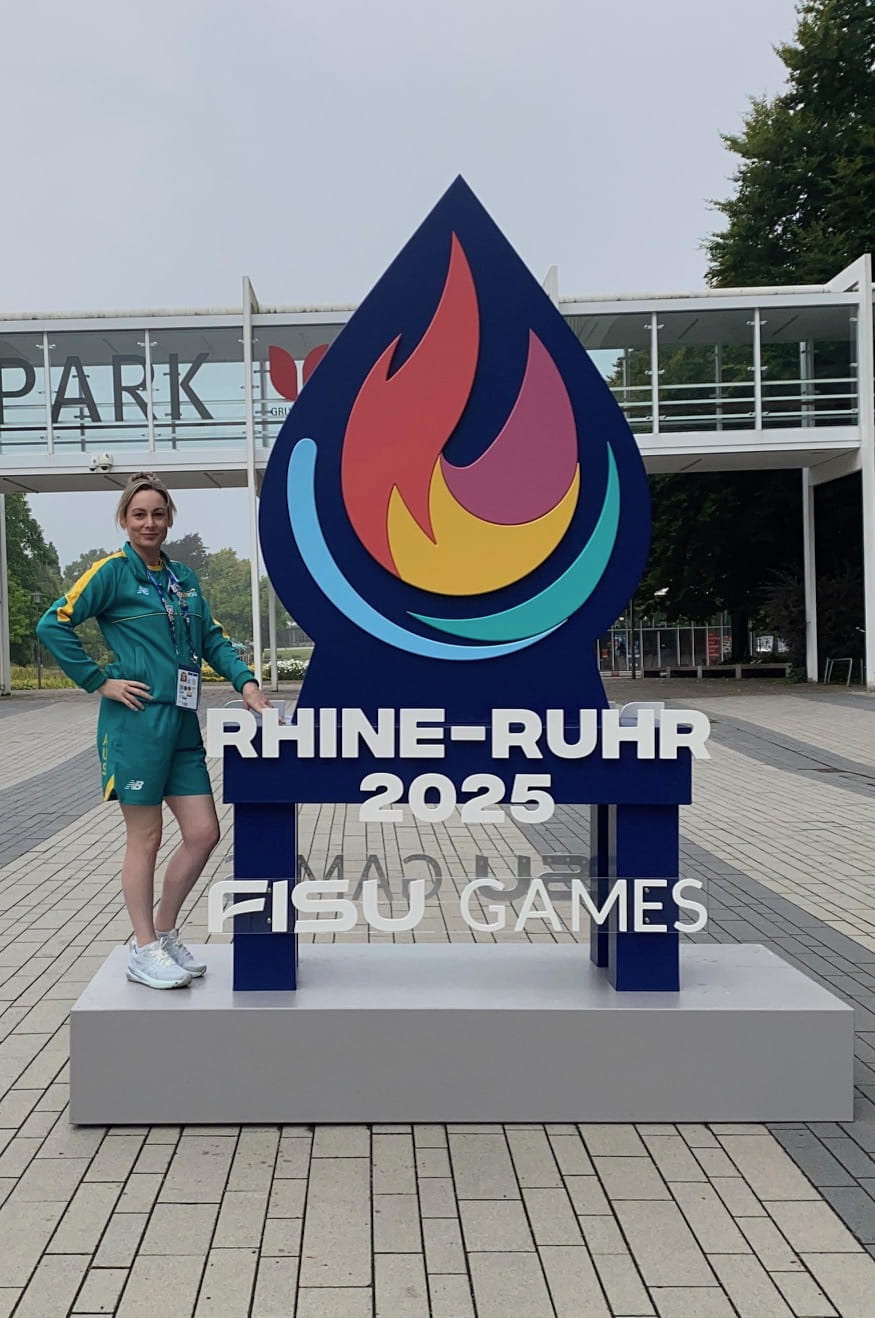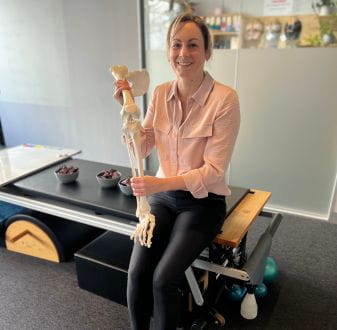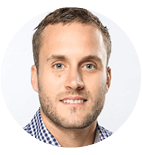For many young people who love sport, the dream is to play at the highest level. For Caroline Cleary, that dream started on the netball court when she was just seven years old.
“I always thought I was going to play for Australia and be the best player in the whole world. Definitely not," she laughs. “But I reached a strong competitive level, driven by both skill and an unwavering determination that saw netball take priority in my life.” That determination didn't just drive Caroline as a player.
It became the foundation for an exciting career defined by excellence and mentorship. Today, she brings that passion to her students, blending real-world experience with an infectious love of learning. As a PhD candidate and practising clinician, Caroline shows her students what it looks like to live and breathe the profession they're preparing to enter.
From student to practitioner, Caroline is the first to admit her school years weren't filled with academic awards.
“I wasn't a high-achieving student at all. In high school, I barely passed. I didn't know what I wanted to be, but I knew it had to do with sport. I thought that meant a sports medicine doctor, but I quickly realised you had to be a doctor first. And then I was like, 'What's next?' It was physiotherapy.”
Getting into physiotherapy wasn't straightforward. Instead, she explored other avenues: weekend massage courses, personal training certificates and sports training qualifications. Then, almost by chance, she discovered myotherapy.
“I heard an ad on the radio for myotherapy, or musculoskeletal therapy as it was called then. So, I went along to the open day. A few days later, it was week one of year one. I loved myotherapy so much that I didn't want to leave.”
That decision set her on a path that combined both hands-on therapy and higher academic study. She went on to complete a graduate entry with a master's in physiotherapy, followed by postgraduate studies in sports and exercise physiotherapy and paediatric orthopaedics. Today, she's deep into a PhD focused on adolescent girls in sports.
Life on the sidelines for state and national teams
Caroline's career has taken her far beyond the classroom and clinic. She's worked with national and state teams across basketball, hockey and netball, and even travelled with Australian teams to international sporting events as a support professional.
“I worked with Hockey Victoria's and Netball Victoria's state teams for many years, which was an incredible experience and gave me the chance to travel with teams. That eventually led to the opportunity to be part of the 2018 Commonwealth Games, which was amazing. I wouldn't have had that chance without all the experience I gained with hockey, netball and basketball.”
Caroline was then selected to join the Australian medical team at the World University Games in Naples in 2019 and Germany in 2025, which is an Olympic-level competition for under-25 sport.

Those experiences confirmed for Caroline the importance of sports medicine staff and the value of building strong, well-trained, and open-minded support teams, something she wishes she'd had as a young athlete.
Advice for young people wanting to work in sport
Caroline is passionate about mentoring the next generation. Her advice for high school students dreaming of a behind-the-scenes career in sport is clear.
“If you want to work in sport, then you need to understand it from every angle – different sports, age groups, levels. Play if you can, get involved where you can, and learn from every experience along the way.”
She also stresses the importance of humility and openness. "Be very unbiased. Be open to learning. Saying, 'This is the way that I tape an ankle, and it's the best way for these reasons' is not going to go as well as, 'Show me how you tape an ankle, I'll show you how I tape it, and we'll learn from each other.' Often, there's no single 'best' method, just different ways to achieve good outcomes."
The difference between physiotherapy and myotherapy
One of the most common questions Caroline gets asked is about the difference between myotherapy and physiotherapy. “At a university level, physiotherapy is taught with the aim that you can work in a hospital or community setting. So, 60–70% of the degree is taught at that level.”
Physiotherapists often begin their careers in hospitals before moving into private practice. Myotherapy, on the other hand, is focused directly on musculoskeletal health and private practice from day one.
“Myotherapy undergrad is geared solely towards the musculoskeletal. You graduate and go straight into private practice. So, if you were to see a newly graduated myotherapist, you would get treatment with education, advice, exercises and manual therapy needed."
Myotherapy sessions are usually longer, mostly hands-on, and include techniques such as cupping, dry needling, soft tissue techniques, and joint mobilisation.
From a professional perspective, Caroline believes that the real distinction lies in patient relationships. "As a myotherapist, you really get to know your patients – how they move, how they think, what's important to them. You spend time with them and build a real understanding. I'm an advocate for hands-on manual therapy. It doesn't fix everything on its own, but touch is such an important part of being human and helping people."
Why choose myotherapy
Caroline is honest about what myotherapy is and isn't. “I see a lot of students coming through who just want to do massage and cupping and want to learn how to needle. And that's not what this is. You have to understand the reasons why it works and how it works and what happens to the tissue physiologically before you just do it to someone – that's what myotherapy is.”
She believes that for the right person, myotherapy can be deeply rewarding. For students considering myotherapy, Caroline is the kind of mentor who reminds them that passion, curiosity, and persistence matter just as much as technical skill.
“I would say you have to have love and care and have a passion for helping others, and you need high enough intelligence to think critically about humans and science and put the two together. This isn't just a massage, it's a science-based health degree.”
One great thing about myotherapy is that it's a great pathway into further study; once you've done your Bachelor of Health Science (Clinical Myotherapy), you can expand into other branches of health, as Caroline did.
“There are so many graduate entry master's degrees on offer, in every modality. With myotherapy, you get biology, chemistry, science, anatomy, neuroanatomy, research, you get all of it. Then you can transfer to a master's degree; there's exercise science, osteopathy, physiotherapy, occupational therapy, speech pathology, nursing, epidemiology, public health – there are so many other health pathways!”
Inspiring the next generation
In her classroom at Think Education, Caroline brings not just clinical expertise but also her years of lived sporting experience.
“Having worked in sport for a long time, I bring that experience into the classroom as much as I can. It's not just about treating injuries – it's about understanding people, teamwork, and what it really takes to perform under pressure. I want students to feel that connection between what they're learning and the real world of sport, to see how it all fits together, and to start thinking and acting like professionals from the very beginning. Helping them from student to confident practitioner is the most rewarding part of what I do.”
At Think Education, students are supported to do just that: combine evidence-based knowledge with hands-on skills to prepare for a career where they can make a real difference in people's lives.
Caroline's story shows that you don't need to be a straight-A student from the start to succeed. With determination, an open mind and a passion for sport and health, you can create a career that takes you from local courts to international arenas, and from the classroom to the clinic.



